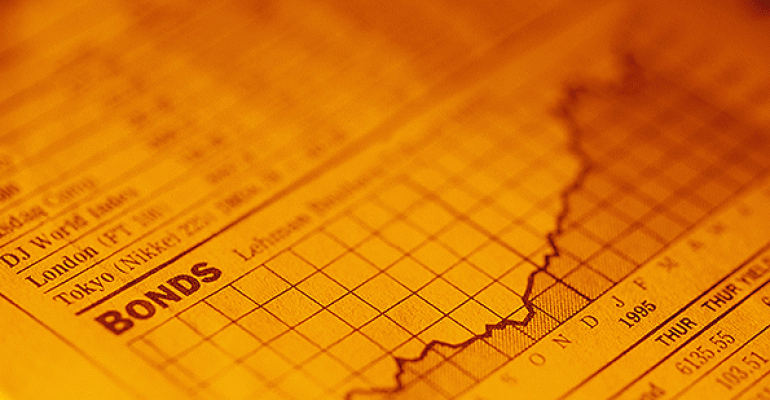(Bloomberg) -- In the U.S. bond market, trying to call a bottom in yields has proven to be a veritable minefield for just about anyone who’s tried.
Time and again, prognosticators across Wall Street have had to go back to the drawing board as the insatiable demand for Treasuries upended their understanding of just how low yields can go.
Now, Societe Generale SA is one of the latest to try a different approach in its attempt to come up with the right formula. Its bond team recently tweaked a longstanding macro model to incorporate two decades of bond prices from Europe, Japan and the U.K. Based on the new model and statistical norms, there’s less than a 1 percent chance U.S. 10-year yields fall below 1.1 percent, especially with the Federal Reserve still intent on raising interest rates.
“We had to revert to a model-based approach to figure out how low yields can go after we broke below 1.4 percent,” a scenario that the firm didn’t think would happen unless the Fed did an about-face, said Subadra Rajappa, SocGen’s head of U.S. rates strategy. In our view, “it still doesn’t make any sense for the Fed to change its policy stance from tightening to even on-hold or easing.”
SocGen says its model implies a “fair value” for 10-year yields of 1.95 percent, which suggests Treasuries are still extremely overvalued even after last week’s selloff. Ten-year yields ended at 1.55 percent on Tuesday, up from a record low of 1.318 percent on July 6.
The fact that SocGen’s original model implied a fair value of 2.85 percent -- a level last seen in early 2014 -- reflects just how confounding the bond market has been. JPMorgan Chase & Co.’s fixed-income team also adjusted its own model to better account for monetary policy expectations outside the U.S.
It’s not hard to see why bond shops are looking for new methods. At the start of 2016, strategists surveyed by Bloomberg projected that yields on 10-year Treasuries would end the year at 2.75 percent. That proved to be way off the mark. Today, the median forecast is more than a percentage point lower.
‘Mass Psychosis’
Whatever the reasons -- which have ranged from tepid worldwide growth to negative interest rates abroad and the U.K.’s stunning vote to leave the European Union -- the gains in Treasuries and other haven assets have confounded even the bond market’s brightest luminaries.
Jeffrey Gundlach, who oversees over $100 billion at DoubleLine Capital, warned of a “ mass psychosis” among investors piling into debt securities with ultra-low yields. Bill Gross of Janus Capital Group Inc. compared the sky-high prices in the global bond market to a “supernova that will explode one day.”
Bonds worldwide are off to their best start since at least 1997, according to index data compiled by Bank of America Corp. Yields on roughly $10 trillion of sovereign debt have fallen below zero. And Treasuries have returned 5.3 percent, the most on a year-to-date basis since in 2010.
At least one major bond shop says the bull market still has room to run. Morgan Stanley, which predicted this year’s gains in Treasuries, sees 10-year yields falling to 1 percent by the first quarter of 2017 as growth disappoints.
Unrepentant Bull
“We expect the ‘year of the bull’ to continue for Treasuries,” Matthew Hornbach, the firm’s head of global interest-rate strategy, said in a report.
Although central-bank bond buying in Europe and Japan is helping to put a lid on yields in the U.S., Goldman Sachs Group Inc. still sees a stronger U.S. economy convincing the Fed to raise rates before year-end. That will ultimately help damp foreign demand for Treasuries. The bank, which puts fair value for the 10-year note at 2.5 percent based on its so-called Sudoku model, sees yields rising to 2 percent by the end of 2016.
“Treasuries are not a no-brainer for global investors anymore,” said Zach Pandl, economist at Goldman. “The return prospects for Treasuries are very poor at current rate levels.”
--With assistance from Wes Goodman. To contact the reporter on this story: Liz Capo McCormick in New York at [email protected] To contact the editors responsible for this story: Boris Korby at [email protected] Michael Tsang, Mark Tannenbaum




